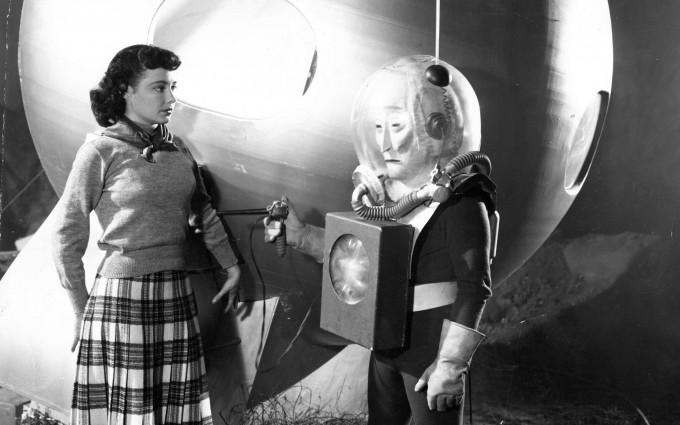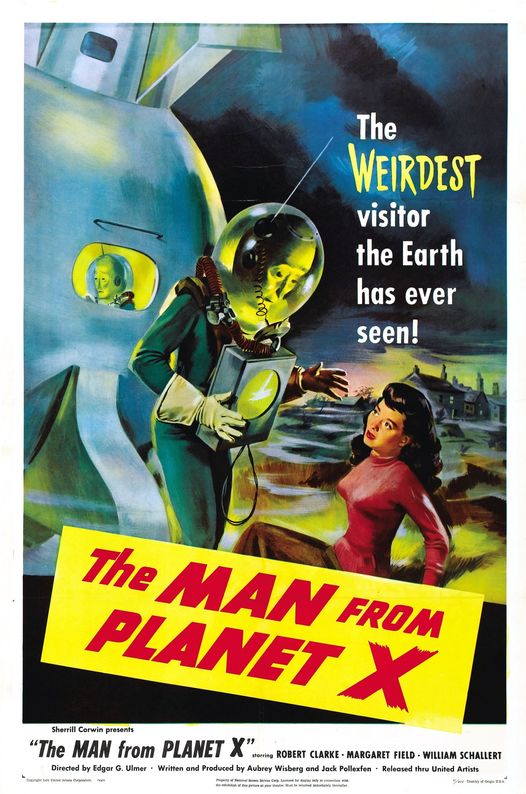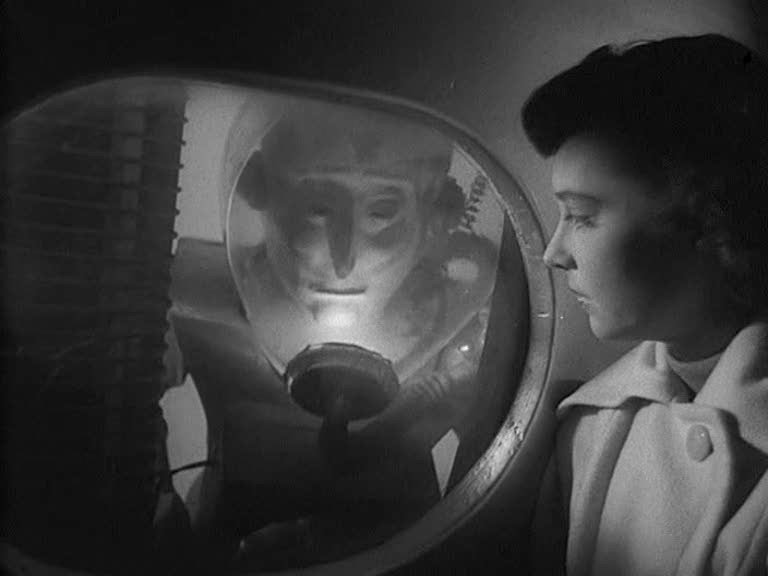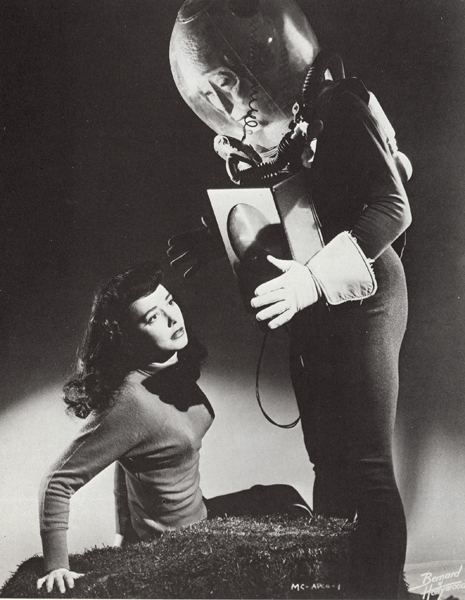The Man From Planet X (1951) Edgar G. Ulmer

In the early days of science fiction cinema, “The Man From Planet X” emerged as a pioneering work that captivated audiences with its blend of extraterrestrial intrigue, atmospheric suspense, and Cold War-era anxieties. Directed by Edgar G. Ulmer and starring Robert Clarke, Margaret Field, and William Schallert among others, the film opened in 1951, marking a significant contribution to the genre and leaving a lasting impression on audiences and critics alike.
The plot of “The Man From Planet X” unfolds on a remote Scottish island where a mysterious spaceship crash-lands, revealing its solitary alien occupant. Robert Clarke portrays John Lawrence, a scientist who becomes entangled in a tense standoff between the alien visitor and a group of opportunistic individuals seeking to exploit its advanced technology for personal gain.
The titular character, the Man From Planet X, is depicted as a creature of both curiosity and menace, with an otherworldly appearance that evokes both sympathy and fear. The film explores themes of communication barriers, the fear of the unknown, and the ethical implications of encountering extraterrestrial intelligence during a time of heightened Cold War tensions.

Robert Clarke’s portrayal of John Lawrence is anchored in scientific curiosity and moral integrity, as he navigates the complexities of human greed and the ethical dilemmas posed by the alien’s arrival. Margaret Field delivers a strong performance as Enid Elliot, Lawrence’s romantic interest whose compassion and bravery are tested in the face of imminent danger.
William Schallert’s role as Professor Elliot adds depth to the narrative, providing scientific expertise and a sense of urgency as the island’s inhabitants grapple with the implications of the alien’s presence. The ensemble cast, including Raymond Bond as the conniving reporter and Roy Engel as the pragmatic sheriff, contributes to the film’s suspenseful atmosphere and moral quandaries.

Director Edgar G. Ulmer’s innovative use of atmospheric cinematography and minimalist set design enhances the film’s sense of isolation and impending doom. The Scottish island setting, shrouded in fog and shadow, becomes a character in itself, heightening the tension and sense of claustrophobia as events unfold.
“The Man From Planet X” is more than a creature feature; it serves as a reflection of Cold War-era fears and uncertainties about the implications of advanced technology and the potential for extraterrestrial contact. The film’s exploration of human nature under pressure, from altruism to opportunism, resonated with audiences grappling with the ethical and existential questions of their time.

Released in 1951, “The Man From Planet X” garnered modest success at the box office and received mixed reviews from critics upon its initial release. However, its influence on subsequent science fiction films and its enduring legacy as a cult classic have solidified its place in cinematic history. The film’s themes of exploration, discovery, and the consequences of human actions continue to resonate with audiences interested in the intersection of science fiction and social commentary.
In conclusion, “The Man From Planet X,” starring Robert Clarke, Margaret Field, and William Schallert, remains a testament to the imaginative spirit of early science fiction cinema. Released in 1951, the film’s exploration of alien encounter, moral ambiguity, and Cold War-era anxieties continues to fascinate and provoke thought, underscoring its status as a pioneering work in the genre.